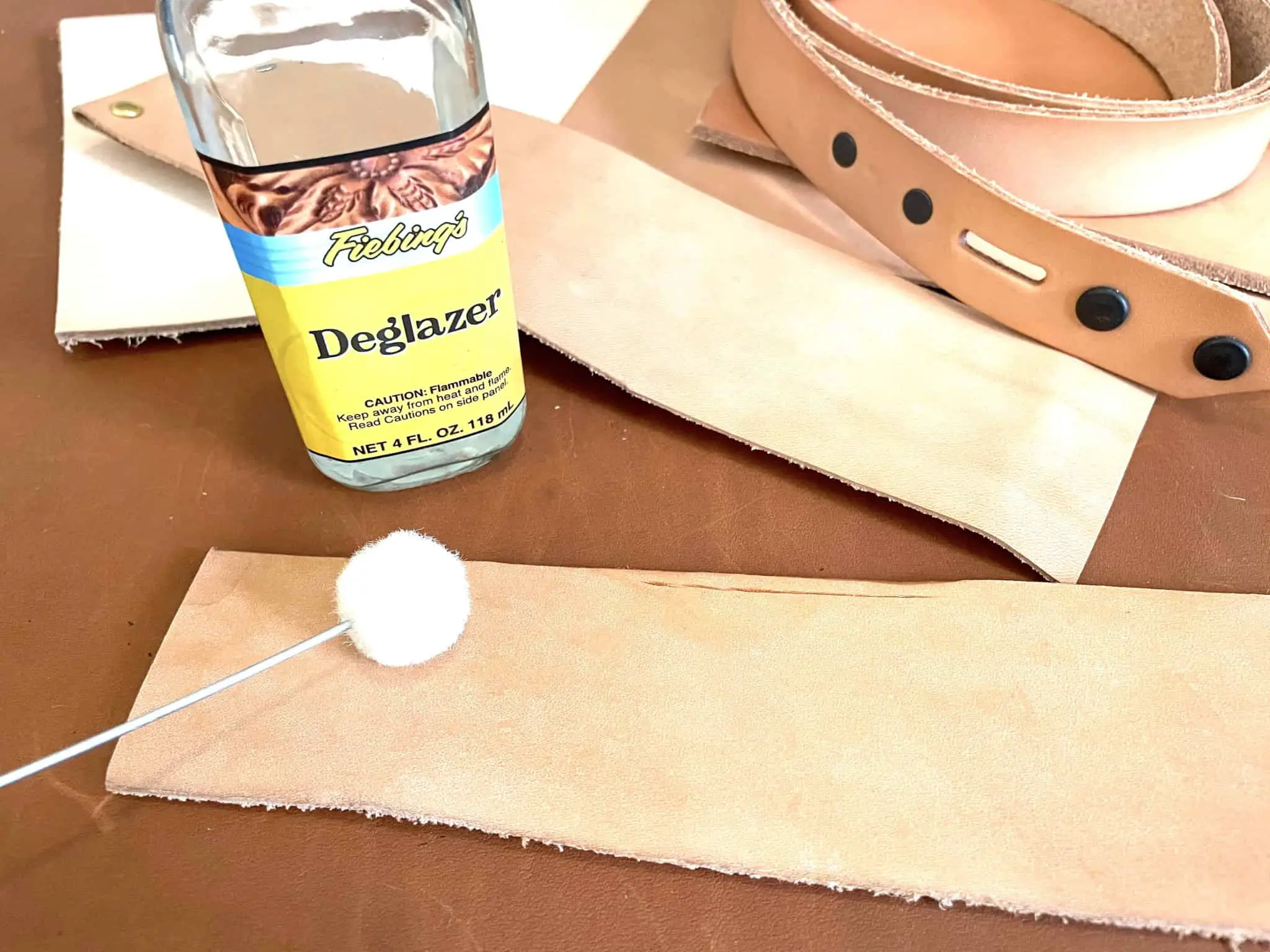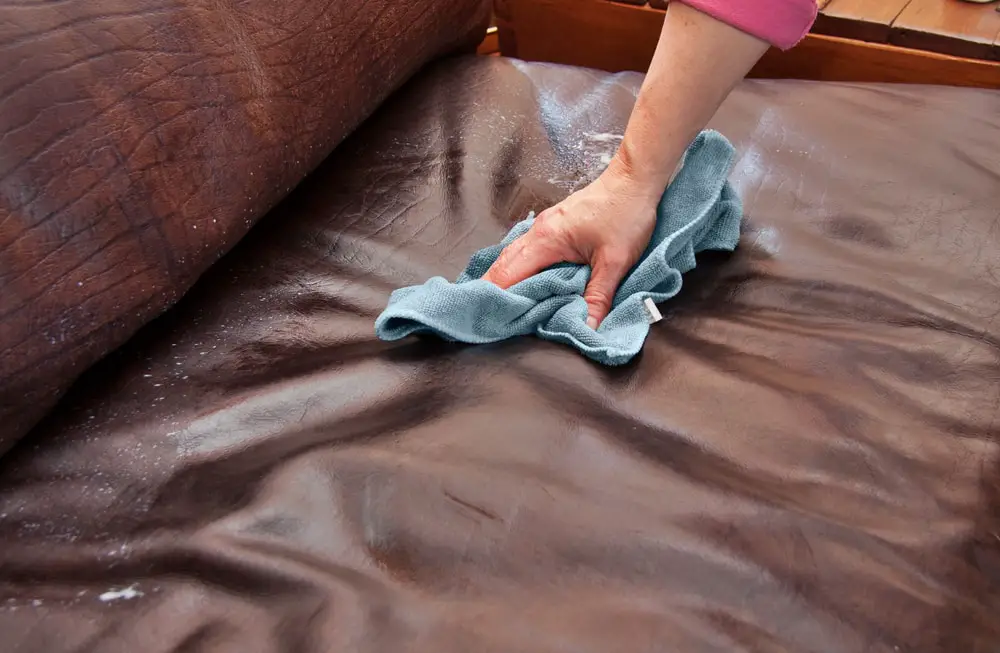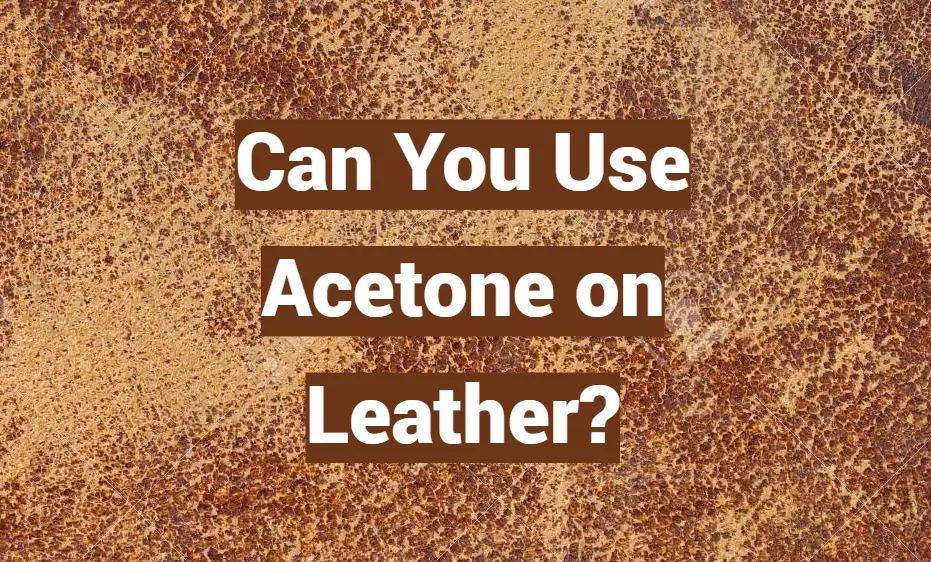There are a lot of misconceptions about acetone and leather. Some people think that it’s never safe to use acetone on leather, while others believe that it’s the only way to get rid of tough stains. In this article, we will clear up all the confusion and answer all your questions about using acetone on leather. We’ll cover everything from how to prepare the surface before you start cleaning to the best ways to remove different types of stains. So, whether you’re looking for general tips or specific advice on how to deal with a particular stain, read on!
Can I Use Acetone To Deglaze Leather?
The short answer is yes, you can use acetone to deglaze leather. However, you must prepare the surface of the leather before doing so. First, make sure the leather is completely dry and free of dirt or debris. Then, apply a thin layer of leather conditioner to the area you wish to deglaze. This will help protect the leather from any damage caused by the acetone.

Finally, once your leather is prepped and ready to go, carefully use an old rag or cloth soaked in acetone to wipe away any excess glue or dirt on the surface. Be sure not to scrub too hard though – this could cause scratches or other damage! Once done, let it air dry for at least 24 hours before using it. [1]
Easy & Effective Leather Care: Glaze Removal & Conditioning
Leather care is essential for preserving the health of your leather items and keeping them looking great. Glaze removal and conditioning are two easy and effective steps in leather care that will help you maintain the longevity of your leather products.
To start, glaze removal involves removing any surface residue or dirt from the leather material to reveal its natural textures. You can do this by gently wiping down the item with a damp cloth, using a mild soap solution if necessary.
Once the glaze is removed, it’s important to condition the leather with a quality leather conditioning product to restore its natural oils and prevent cracking.
How Do You Remove Glaze From Leather?
Removing glaze from leather can be a difficult task, but it is not impossible. Here are some tips and tricks to help you remove glaze from leather:
- Use a soft-bristled brush to gently scrub away the build-up of glaze on the surface of the leather. You can use either a natural bristle brush or an old toothbrush for this purpose. Make sure to work in circular motions to avoid damaging the material further.
- Apply a solution of warm water and liquid soap onto the leather surface using a clean cloth or sponge and then rub it into the glazed area in a circular motion until all of the residue has been removed.
- For tougher stains, you can also try using a mixture of equal parts vinegar and water to help remove the glaze from the leather. This solution will also help to make the leather more supple and restore its natural oils.
- soft cloth. Finally, apply a quality leather conditioner to bring back the original suppleness of your leather item. [2]
How Do You Deglaze A Leather Couch?
Removing glaze from a leather couch is an important step in proper leather care. This not only helps to preserve the beauty and longevity of your furniture, but it also makes it easier to clean and maintain over time.

To deglaze a leather couch, begin by vacuuming up any loose dirt or debris from the surface using a handheld vacuum cleaner. Next, mix together one part white vinegar and two parts water in a bowl and soak a soft cloth in this mixture. Wring out the excess liquid and gently dab the cloth onto the leather to remove any remaining glaze or dirt.
Finally, apply some quality leather conditioner (available at most stores that carry household goods) with another clean cloth to help protect and nourish the leather. Let this sit for at least 30 minutes before wiping off any excess conditioner with a damp cloth.
Select The Right Deglazer For The Job
When it comes to deglazing leather, there are a few options available depending on the job at hand. For lighter glaze removal, white vinegar and water can be used as an effective yet gentle cleaning solution. If you’re dealing with more stubborn stains and residue, then you may need to use a stronger product such as acetone or mineral spirits.
Will Rubbing Alcohol Ruin Leather?
Rubbing alcohol can be used on leather, but it is important to exercise caution when doing so. While rubbing alcohol can be effective for removing glaze and other stains from leather, it can also strip away its natural oils if used too often or in too high of concentrations.
Therefore, it’s best to only use small amounts and dilute them with water before applying to the leather. Additionally, it’s important to follow up with a quality leather conditioner after any cleaning involving rubbing alcohol to restore the material’s natural oils and keep it looking great. [3]
FAQ
What can destroy leather?
Leather can be damaged and destroyed by excessive exposure to heat, moisture, sunlight, and harsh chemicals. While some leather is treated with protective coatings that help it withstand these elements better than others, all leather needs to be cared for correctly to last a long time.
How do you reverse acetone damage on leather?
Acetone can cause serious damage to leather, but it doesn’t have to be permanent. To repair the damage caused by acetone, start by cleaning the area with a mild soap and water solution and then let it dry completely. Next, apply a conditioner specifically designed for leather and work it into the material using a soft cloth or brush.
Finally, buff away any excess conditioner with a clean cloth and allow the leather to dry thoroughly before use. This process should help restore most of the original suppleness of your leather item. [4]
Useful Video: Acetone testing on leather and tray
Conclusion
In conclusion, this post has explored the potential outcomes when using acetone on leather. It’s clear that acetone can prove damaging to some leathers, so it’s important to check your leather type and any care guidelines before use. We recommend only attempting to use acetone to clean or remove a stain from a leather product if you feel comfortable with the risk involved and are sure of the leather type we outlined above. If you’d rather play it safe and avoid the risks associated with acetone, there are plenty of other household items you can turn to such as water, white vinegar, dish soap, and oil-based cleaners that may be suitable for cleaning leather items. Lastly, it’s always best to get professional help if in doubt – they know their stuff! So now you have all the information needed to answer the question – can you use acetone on leather? Thanks for reading!
References
- https://kitschmag.com/deglazing-leather-with-acetone-should-you/
- https://leatherworker.net/forum/topic/45937-how-do-i-remove-a-shiny-surface-from-leather/
- https://leatherinformer.com/can-you-use-alcohol-on-leather/
- https://homeguides.sfgate.com/repair-acetone-stain-leather-103254.html







Leave a Reply